I was not sorry to bid Queenstown good-bye and head into the countryside. Our destination today was Wanaka (pronounced WAH-nah-kah), another ski town on a beautiful lake. Wanaka was Chas' home town, so I'm sure he enjoyed visiting old friends while we were there.
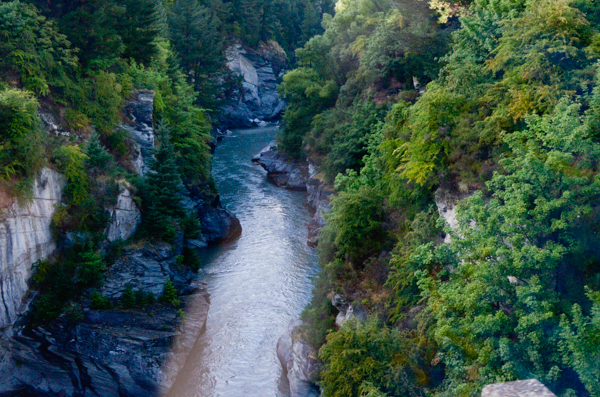
The discovery of gold in New Zealand in the mid-19th century led to a boom that made Dunedin the richest city in the country.
The Shotover River, shown here, was once one of the richest gold-bearing rivers in the world. As the info at the link says, since 1868 it has been panned, cradled, sluiced and dredged.
At present "gold" is still being made from adventure sports such as white water rafting.
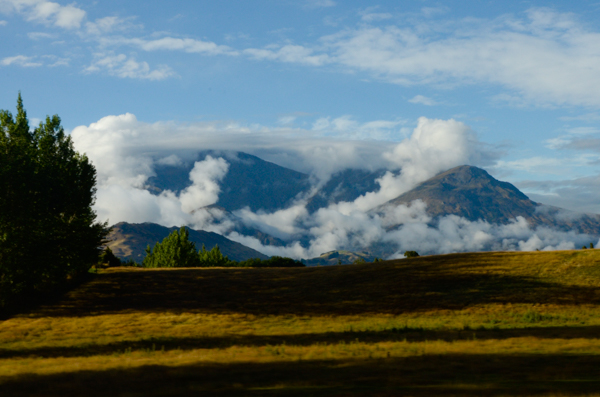
Our first destination was Arrowtown, but on the way we passed some beautiful countryside.
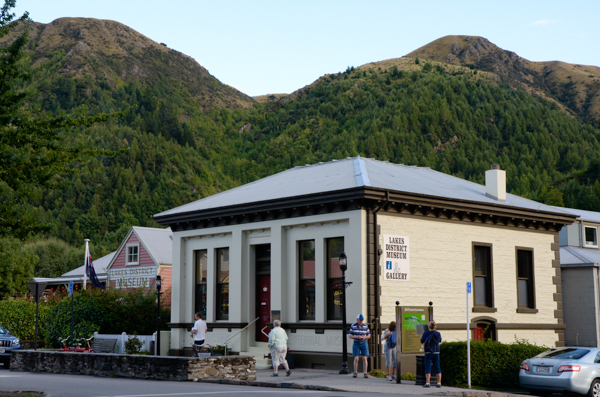
This delightful small museum gave the history of settlement and gold mining in the area.
Arrowtown has been remarkably preserved and the main street is protected. The interior of a building may be updated, but its exterior may not be changed.
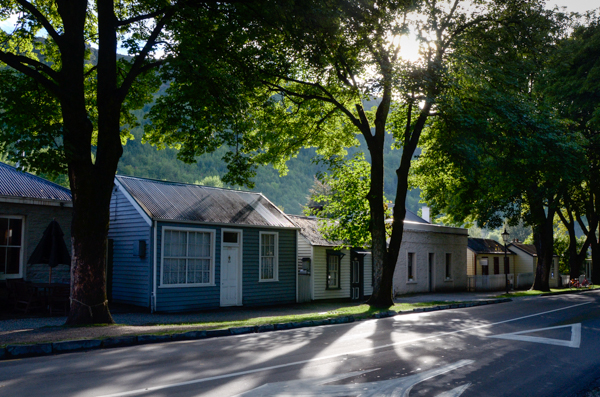
This end of the main street illustrates a residential area of small miner's cottages.
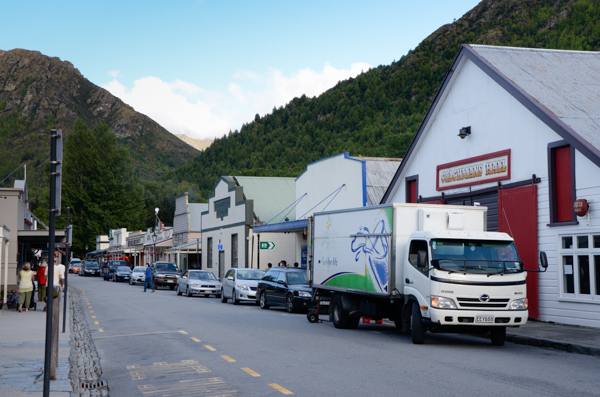
The business district is mostly souvenir shops nowadays.
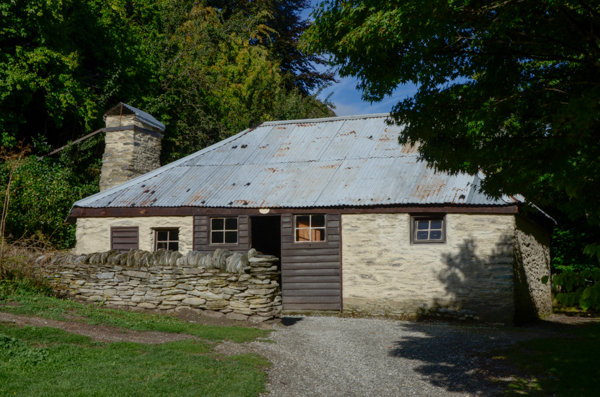
The part that interested us most was the Chinese Settlement.
The NZ government invited Chinese to establish claims in areas that had been worked over by others. Only men came and they came from Australia and the US in addition to mainland China. Once in NZ they faced significant discrimination. In Arrowtown they established a settlement on the fringes of town.
At first the settlement was centered around a social hall, but when it fell into disrepair, the center became Ah Lum's store, reconstructed here.
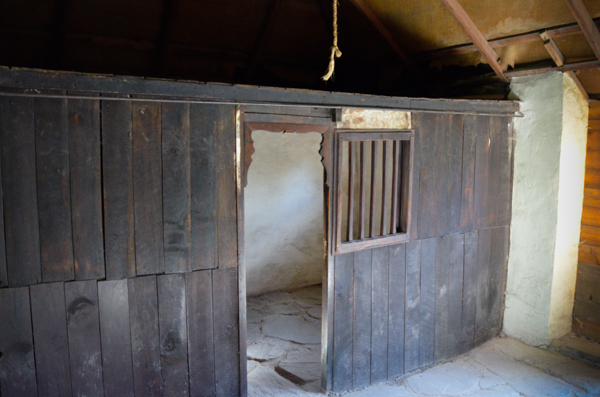
In addition to running a store that provided a wide variety of European and Chinese goods, Ah Lum had a small bank and also served as interpreter and letter-writer for the Chinese miners. When he died in 1925, the heart of the community stopped beating.
This was the office of the store. There were also two bedrooms and a loft that could accommodate travelers.
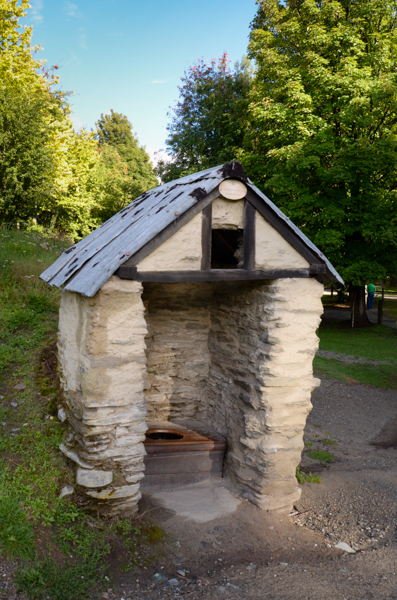
Down the hill from the store was this modest structure. It didn't have an interpretive sign because its use is obvious.
It may have been the only "necessary" in the Chinese Settlement.
I hope it had a door, or at least a curtain, back in the day.
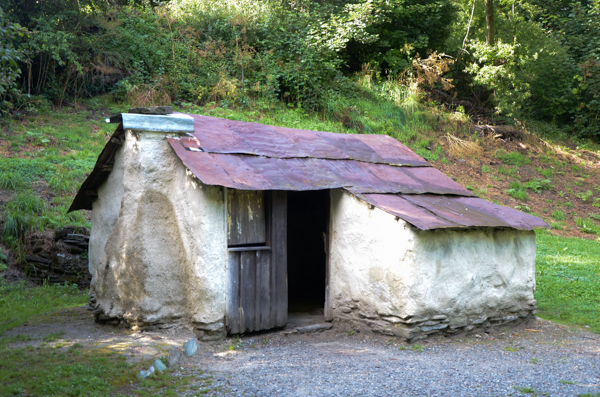
All of the buildings are reconstructed on original foundations using historical photos and archeological research.
The dwellings were dark and undecorated, although parts of Ah Lum's store were wallpapered with newspapers.
At one time the miners may have had communal residences, but over time they built individual homes.
The occupant of this hut was a miner named "Old Tom." Some of his belongings are displayed in the museum.
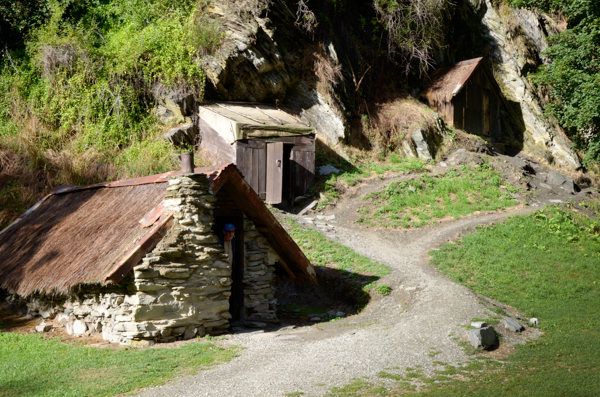
The miners planted gardens for both commercial and personal use. Archeological excavations indicate that buildings such as these built into the rock, were used for storage of the produce.
The hut that Carl is peeking out of was a residence, as shown by the chimney near the door.
As the income from gold declined, produce became a secondary source of income. More affluent Chinese had horses and carts to deliver vegetables while others used baskets slung from a shoulder pole.
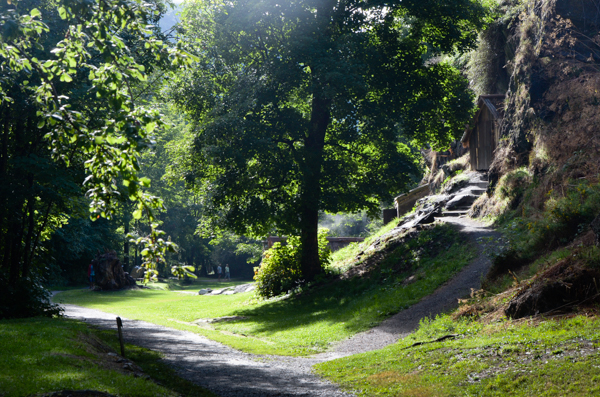
The "main street" of the Chinese community looking back toward Ah Lum's store and the Anglo settlement.
Many of the Chinese miners were addicted to opium. It isn't known how many brought their addiction with them (opium addiction was encouraged by the British in China) or how many took it up as an escape from the hardships and discrimination that they faced.
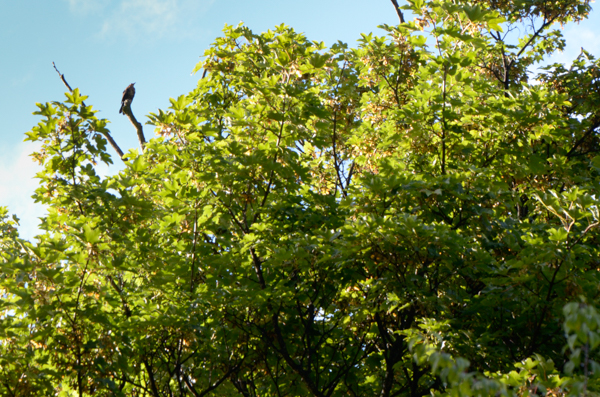
As we walked through the settlement, I was able to capture this picture of a Bellbird.
Finally!
Didn't have my telephoto, so no close-up.
Click your "back" button to return.